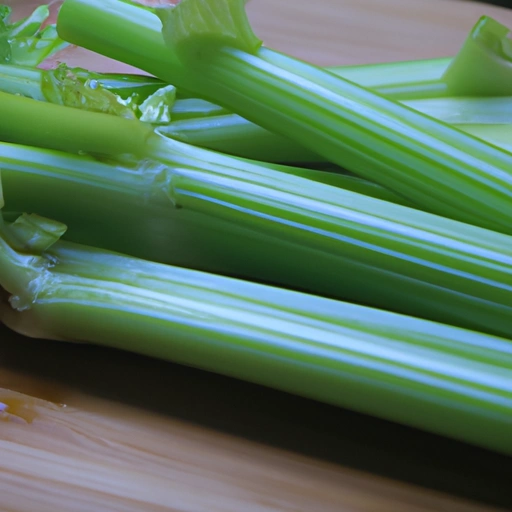Celery
Description

Celery is a marshland plant in the family Apiaceae that has been cultivated as a vegetable since antiquity. It is characterized by its long fibrous stalks tapering into leaves, and its crisp texture and distinctive flavor make it a popular addition to a variety of dishes worldwide. Celery can be consumed raw or cooked, offering a range of possibilities for incorporating it into meals.
Common uses
Celery is commonly used as a flavor enhancer in soups, stews, and salads. It is also served as a healthy snack, often accompanied by dips such as peanut butter or ranch dressing. Additionally, celery is a key ingredient in the preparation of stocks and broths, used to deepen the flavor profile.
Nutritional value
Calories
Celery is low in calories, with a typical stalk containing about 6 calories (25 kJ).
Protein
A serving size of 100 grams of celery provides about 0.7 grams of protein.
Fat
Celery is virtually fat-free, with less than 0.2 grams per 100 grams.
Carbohydrates
Celery contains about 3 grams of carbohydrates per 100 grams, primarily in the form of dietary fiber and sugars.
Vitamins
This vegetable is a good source of Vitamin K and also contains some Vitamin A, folate, and Vitamin C.
Minerals
Celery offers minerals such as potassium, calcium, magnesium, and sodium in small amounts.
Health benefits
Celery is rich in antioxidants and has anti-inflammatory properties. It can support digestion, lower blood pressure, and is thought to promote heart health. Its high water content also makes it excellent for hydration.
Potential risks
While celery is generally safe for consumption, it contains allergens that may cause reactions in sensitive individuals. Additionally, it is listed among foods with higher pesticide residues, so washing thoroughly or choosing organic varieties is recommended.
Common recipes
Celery is an integral part of recipes such as Waldorf salad, chicken noodle soup, and stuffing for poultry. It is often juiced or used in smoothies as well.
Cooking methods
Celery can be eaten raw, sautéed, braised, boiled, or steamed, making it highly versatile in cooking.
Pairing with other ingredients
It pairs well with flavors such as apple, peanut butter, and blue cheese, and complements other vegetables like onion and carrot in cooked dishes.
Summary
Celery is a low-calorie vegetable with a distinct taste and crisp texture, suitable for a variety of dishes both cooked and raw. It is a significant source of vitamins and minerals, particularly Vitamin K, and has various health benefits including promoting hydration and potentially lowering blood pressure. With its historical roots in ancient civilizations and modern uses in global cuisines, celery is a valuable ingredient in any kitchen.